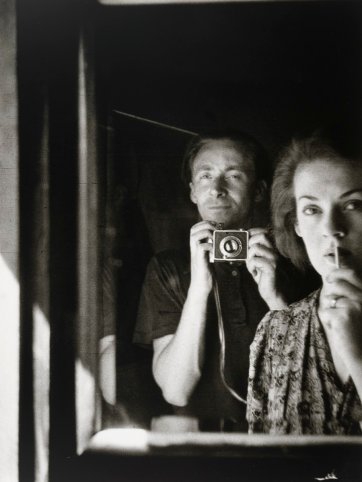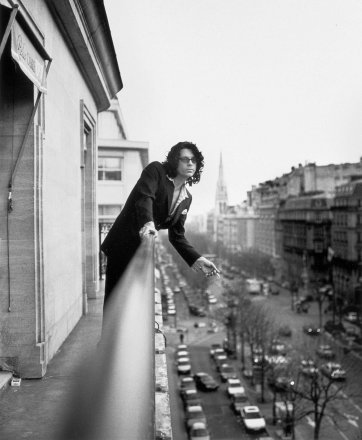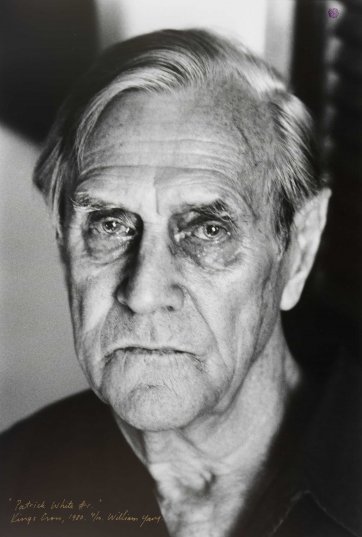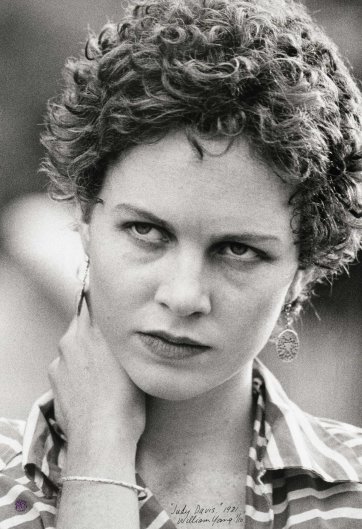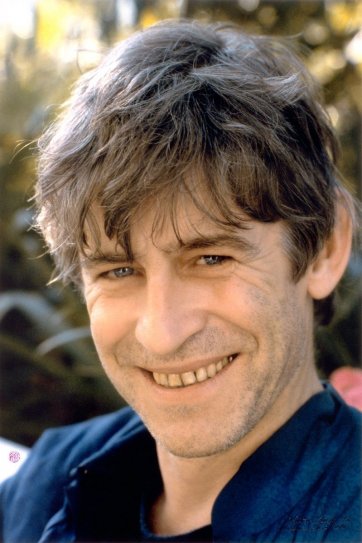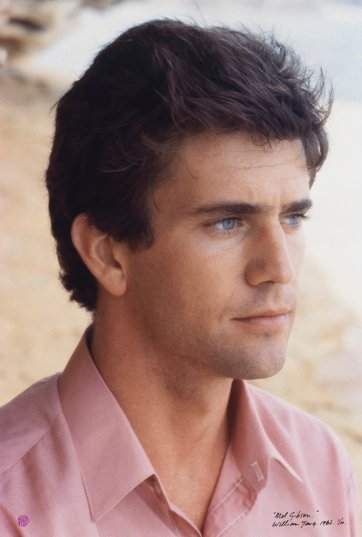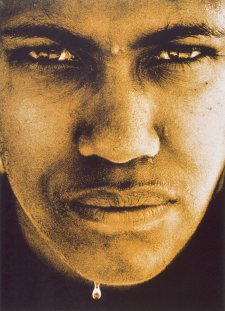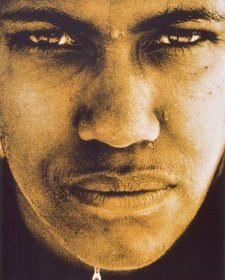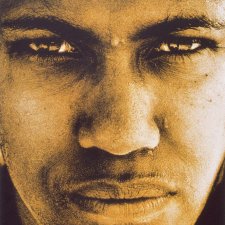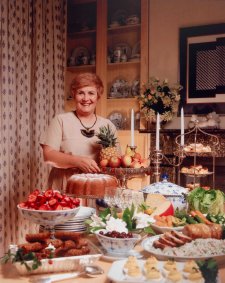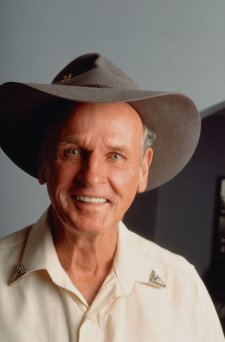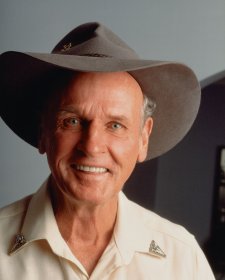The exhibition Depth of Field showcases the Gallery's collection of twentieth and twenty-first century portrait photographs organised around key themes - the worlds of art and architecture, politics and public life, literature, entertainment, music and sport.
Depth of Field draws together portraits of Australians who have all played a role in shaping Australia ’s history and identity and includes photographs of entertainers, architects, athletes, writers, artists, movie stars, and politicians. The exhibition showcases the work of both twentieth-century and contemporary photographers, including Axel Poignant, Max Dupain, David Moore, Polly Borland, and Tracey Moffatt, highlighting the diverse stylistic and technical approaches used by different photographers.
Essay
One of the more fascinating aspects of the exhibition is the section that displays multiple portraits of a sitter taken by different photographers. A comparison of these photographs demonstrating that portraits are never definitive images, but instead, only capture elements of the sitter’s character in a fixed moment in time.
The photographic duo, Montalbetti and Campbell illustrate this most clearly when they state, ‘ It is irrelevant how many times a person has been photographed. Our aim is to create unique images of them, to be part of their testimony’. In their portrait of Cathy Freeman, the Olympic sprinter is depicted as a determined, intense individual. The limited tonal range and cropped close up of her face, contributing to this effect. The athlete’s resolute vision, which connects directly with the viewer, also adds weight to this conviction. Shot in 1994, at the time Freeman’s career was beginning to take off; the image draws the viewer into the work, and boldly states that there is more to come.
Fast forward to the 2000 Sydney Olympics and Freeman’s historic win in the 400-metre sprint. Cloaked in her green and gold cat suit, her eyes looking through the stadium roof to the night sky above, Freeman is captured in an iconic shot, seconds after her win. Press photographer, David Caird presenting the viewer with an intimate glimpse of the athlete, in the moment when Freeman’s determination and hours of training were suddenly rewarded. The stark, black background and simple compositional focus on the subject contribute to this effect and make it an image that will live forever in the memory of all Australians.
One can also observe the distinction of photographic styles and approaches by comparing the portraits of David Gulpilil by David Moore and Tracey Moffatt. Gulpilil is one of Australia ’s most successful Aboriginal actors, who first achieved recognition as an unknown 15 year old in the internationally acclaimed film, Walkabout. He was also the subject of Craig Ruddy’s award winning portrait in the 2004 Archibald Prize.
In Moore ’s portrait, Gulpilil is presented as himself, as a figure at ease in his country in Arnhem Land . Symbolising the actors respect for the landscape, culture and people of his home. Moore ’s interest in form and composition are also apparent, as the strong vertical and horizontal lines created by Gulpilil’s decorated spear and hairpiece, combined with the diagonal pattern of leaves, frame the actor in the landscape. The viewer gaining the impression that Gulpilil is an individual proud of his roots.
Conversely Moffatt’s portrait is highly contrived, with Gulpilil acting out a role in the image itself. This is characteristic of Moffatt’s style and deliberately constructed images and as the artist herself observed, ‘I am not concerned with capturing reality, I’m concerned with creating it myself.’ Clothed in brightly coloured board shorts and holding a stubbie in one hand, Gulpilil is portrayed in the guise of the stereotypical Australian surfer, traditional patterns painted on his face in the place of sunscreen. In doing so Moffatt forces the viewer to confront their notion of Aboriginal identity and as Gael Newton noted in 1995 in an essay on the artist, ‘ His [Gulpilil’s] relaxed pose ironically overturns our history in which sun bronzed Aussie surfers have displaced the original inhabitants from our shores.’ Thus on one level it may be seen as a portrait of Gulpilil, however as an image constructed outside reality, it may also be viewed as a work that simply reflects the photographer’s own ideals.
The exhibition also features an interesting selection of portraits depicting artists in their studio. In Lewis Morley’s image of Margaret Olley the artist is photographed amidst the chaos and confusion of her house and studio in Paddington – the artist’s source of inspiration for the interior and still life paintings for which she is renown. Still life arrangements, paint, brushes, and papers compete for space and attention on the tables, chairs and the floor that surround the artist, providing an intimate insight into Olley’s working environment. Sage captures Nora Heysen in a moment of quiet contemplation, in his portrait of the artist. Amongst the piles of books, easels and paintings, it is Heysen’s 1933 work, Aportrait study - Ruth, which stands out, providing the viewer with an example of Heysen’s style and hinting at the history hidden in the Hunters Hill house and studio, where the artist worked for the majority of her career. Morley presents a witty and offbeat portrait of Brett Whiteley as his photograph of the artist. The inclusion of the hands of a third person, who holds up the unusual arrangement of gumboot and stuffed bird adding an element of uncertainty and quirkiness to the portrait composition.
Portraits of architects are also included in the show, celebrating the contributions these individuals have made to Australia ’s built environment. In Moore ’s portrait of Harry Seidler, the Modernist architect is depicted in his home in Killara, the natural scenery evident through the window, referring to Seidler’s use and love of nature in his designs. Mark Strizic’s portrait of Robin Boyd is also fitting, as Boyd was one of the first architects to commission Strizic to photograph his work. The pair have worked together on many other projects including a book, Living in Australia, first published in 1970. The exhibition also includes one of the Gallery’s most recent acquisitions - a portrait of the Danish architect Jorn Utzon by Ole Haupt. The image acknowledging the role Utzon played in creating one of Australia ’s most recognisable icons, the Sydney Opera House.
Depth of Field is an exhibition about the development of the National Portrait Gallery’s photographic collection. Featuring more than eighty portraits by both historical and contemporary photographers, it celebrates the Gallery’s collection so far, and suggests that we can certainly look forward to what the next five years will bring.
Lauren Dalla
Gallery Assistant
